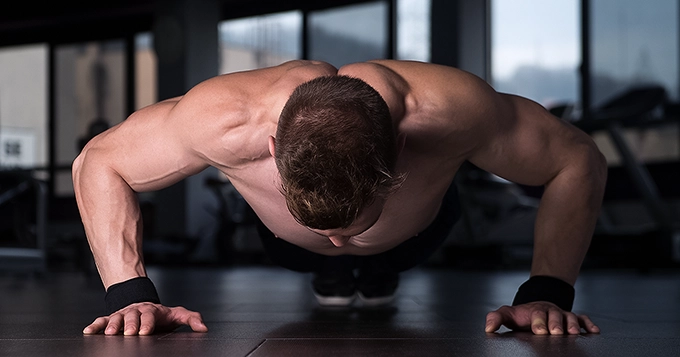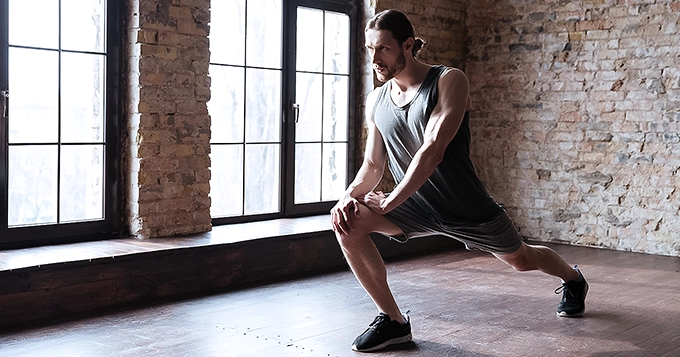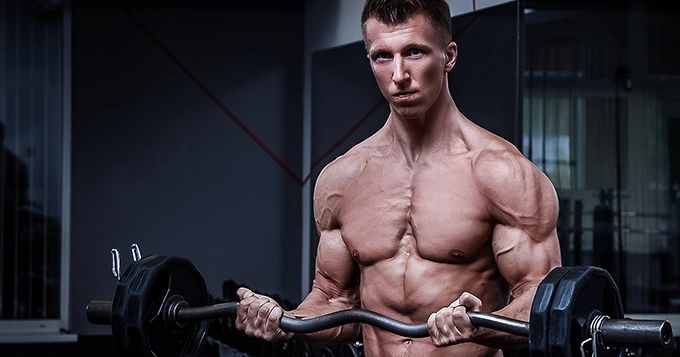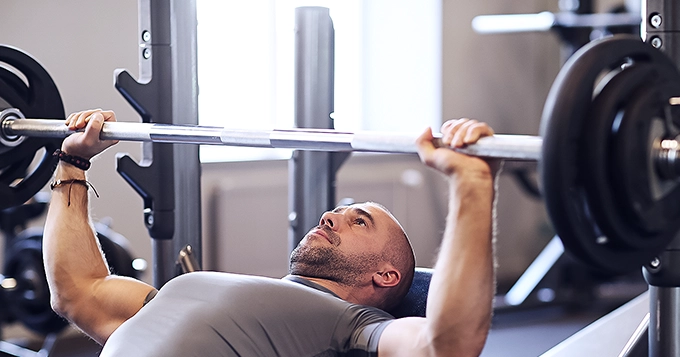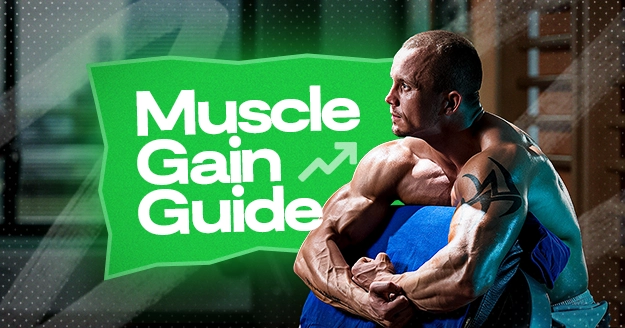Building muscle requires a strategic approach that combines the right exercises, proper nutrition, and adequate rest. If you’re looking to develop your muscles, here’s a comprehensive guide to the most effective exercises you can include in your workout plan for muscle gain.
But first, let’s talk about the benefits of gaining muscles.
Importance of Muscle Gain
Physical Benefits
- Increased Strength: Building muscle enhances overall strength, making daily tasks easier and improving performance in physical activities and sports. Strong muscles provide better support for your bones, reducing stress on your skeletal system. This enhanced support can help alleviate back pain and arthritis symptoms and lower the risk of osteoporosis as you age.
- Improved Metabolism: Your muscle tissue burns more calories at rest compared to fat tissue, which can help with weight management and fat loss.
- Enhanced Bone Density: Resistance training and muscle growth stimulate bone formation, reducing your risk of fractures and osteoporosis.
- Better Insulin Sensitivity: Increased muscle mass can improve insulin sensitivity, lowering the risk of type 2 diabetes and helping with blood sugar control.
- Injury Prevention: Stronger muscles can provide better stability on your joints, reducing your likelihood of injuries.
- Improved Posture: Muscle development, especially in the core and back, can enhance posture and reduce back pain.
- Enhanced Cardiovascular Health: Resistance training and increased muscle mass can improve heart health by lowering blood pressure and improving your heart function.
Psychological Benefits
- Boosted Confidence and Self-E steem: Achieving muscle growth can lead to improved body image and self-esteem.
- Reduced Stress and Anxiety: Exercise, including strength training, releases endorphins that help reduce.
- Better Mental Health: Regular physical activity, including muscle-building exercises, can reduce symptoms of depression.
- Improved Cognitive Function: Exercise promotes brain health and can enhance cognitive functions such as memory.
Functional Benefits
- Enhanced Athletic Performance: Increased muscle mass and strength can significantly improve performance in various physical activities and even in sports.
- Greater Physical Independence: Maintaining muscle mass as you age helps retain mobility and independence, reducing the risk of falls and improving overall quality of life.
- Improved Functional Fitness: Everyday activities, like lifting, carrying, and climbing stairs, become easier with greater muscle strength.
Long-Term Health Benefits
- Longevity: Regular strength training and muscle maintenance are associated with a longer lifespan and better overall health in older age.
- Disease Prevention: Increased muscle mass and regular physical activity can reduce your risk of chronic diseases such as arthritis, cardiovascular disease, and some cancers.
Building muscle requires a strategic approach that combines the right exercises, proper nutrition, and adequate rest. If you’re looking to maximize your muscle gains, here’s a comprehensive guide to the most effective exercises you should include in your workout routine.
What is the best exercise for muscle gain?
When it comes to muscle gain, there isn’t a single “best” exercise that works for everyone. The most effective exercises depend on your individual goals, experience level, and personal preferences.
However, certain exercises are widely regarded as highly effective for building muscle across various parts of the body. Here are some fantastic exercises you can incorporate into your workout plan for muscle gain, tailored to target specific muscle groups:
Push-Ups
Target Muscles: Shoulders, chest, triceps, core
You can add push-ups in your workout routine to build muscle at home
They don’t require any equipments which means you can do the anywhere. Push-ups are a effective for building the muscles in your shoulders, chest, triceps, and core. For beginners, starting with wall push-ups or knee push-ups is recommended.
How to Do It:
- Start in a plank position. Place your hands slightly wider than shoulder-width apart.
- Activate your core. Ensure a straight line from your head to heels.
- Lower your body until by bending your elbows until your chest nearly touches the floor.
- Push back up to the plank pose.
Pull-Ups
Target Muscles: Upper back, shoulders, biceps
Pull-up is an effective bodyweight activity for targeting the upper back, shoulders, and biceps. They can be challenging for beginners, so using assisted variations or resistance bands is advised to build strength gradually.
How to Do It:
- Grab a pull-up bar with an overhand grip (hands shoulder-width apart).
- Hang with your arms fully extended.
- Pull your body up and bend your elbows until your chin is above the bar.
- With control, lower your body back to the starting position.
Lunges
Target Muscles: Quadriceps, core, calves, hamstrings, glutes
Lunges are excellent for building leg muscles and strength. Variations such as reverse lunges or walking lunges can enhance balance and target different muscle groups.
How to Do It:
- Begin by standing tall with your feet positioned shoulder-width apart.
- Take a step forward with one leg. Then, lower your hips and bend your knees until they form a 90-degree angle.
- Ensure that your front knee is directly aligned with your ankle, while your back knee hovers just above the floor.
- Push through your front heel to return to stand up before switching legs.
Overhead Press
Target Muscles: Deltoids, triceps, upper chest
The overhead press is a compound exercise, meaning it targets multiple muscles. Beginners should start with lightweight dumbbells or a barbell to focus on proper form. Variations like the Arnold press or seated overhead press can add variety and target different areas of the shoulders.
How to Do It:
- Stand with your feet shoulder-width apart.
- Hold a barbell at shoulder height with palms facing forward.
- Press the weight up until your arms are fully extended overhead.
- Slowly lower the weight back in front of your shoulders.
Barbell Curls
Target Muscles: Biceps
This exercise is great for beginners looking to enhance arm muscle definition and toughness. A good starting weight for beginners is around 20-30 lbs.
How to Do It:
- Stand with your feet shoulder-width apart
- Hold a barbell with an underhand grip.
- Keep your elbows close to your torso and curl the barbell up to shoulder level.
- Slowly lower the barbell back to the original position.
Planks
Target Muscles: Lower back, abdominal muscles, shoulders
If you’re devising a muscle gain workout plan at home, including planks in your routine is definitely a good idea.
Planks target the lower back, abdominal muscles, and shoulders, contributing to overall muscle development. Planks are particularly beneficial for beginners due to their simplicity and effectiveness.
How to Do It:
- Start in a forearm plank position. Make sure your elbows are under your shoulders.
- Keep your body in a straight line.
- Hold the position, engaging your core and keeping your back flat.
Bench Press
Target Muscles: Shoulders, chest, triceps
For beginners, the bench press offers a controlled environment to build strength while maintaining coordination and stability.
How to Do It:
- Lie on a bench. Keep your feet flat on the floor, holding a barbell with an overhand grip, with your hands shoulder-distance apart.
- Lower the barbell to your chest. Keep your elbows at about a 45-degree angle.
- Press the barbell back up, extending your arms fully.
Tips for Effective Muscle Gain
- Progressive Overload: Keep on challenging your muscles by gradually increasing the weight or resistance in your exercises. This method stimulates muscle growth by forcing your muscles to adapt to heavier weights or load over time.
- Proper Nutrition: Nourish your muscles for optimal growth and recovery by maintaining a well-balanced diet rich in essential nutrients. Prioritize adequate intake of protein, carbohydrates, and healthy fats.
- Adequate Rest: Support your muscles’ recovery process by prioritizing adequate sleep and incorporating regular rest days into your routine. Rest is essential for muscle repair and growth, preventing overtraining and injury.
- Consistency: Maintain a regular workout schedule and be patient. Building muscle takes time and dedication, so staying consistent with your training and nutrition is key to seeing results.
- Good Form: Prioritize proper form during exercises to prevent injuries and ensure you are effectively targeting your intended muscle groups. Proper technique enhances the efficiency of your workouts and promotes safer, more sustainable muscle growth.
What is The Best Time to Exercise for Muscle Gain?
Training in the afternoon can boost your muscle growth and strength. During this time, your body experiences heightened anabolic signaling, promoting muscle building. Additionally, the ratio of testosterone to cortisol peaks in the afternoon, supporting your muscle growth and recovery.
Afternoons also offer warmer body temperatures, increasing your muscle blood flow and joint mobility. This primes your body for resistance training, as muscles become more flexible and joints more mobile. Plus, your muscular strength and power tend to be at their peak in the afternoon.
Research suggests the ideal training window is between 2:30 pm and 8:30 pm, assuming a typical sleep-wake cycle from midnight to 8 am. For those with different schedules, aim to train around 6-7 hours after waking to align with natural rhythms for optimal performance and muscle growth.
However, remember that every body is different, so try different training times to find out what works best for you.

